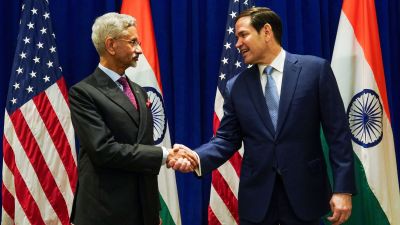As people die, Railways splurge on `research’
NEW DELHI, DECEMBER 9: The Railways, which do not have even Rs 10 crore to buy track maintenance equipment, have spent $ 1 million for res...

NEW DELHI, DECEMBER 9: The Railways, which do not have even Rs 10 crore to buy track maintenance equipment, have spent $ 1 million for research on rail fractures with no apparent results. They are also spending another $ 1 million for a project which has no relevance for India — rail-wheel optimisation.
According to sources, the Railways paid the France-based International Union of Railways (UIC) $ 1 million in 1998 for research on rail fractures. “It was not mandatory for India as a member of the UIC to pay the amount. The UIC had said that major member-countries could pay. And only two countries paid — India and South Africa,” disclosed a senior Railway Board official.
Obviously, the benefits of that research, if any, have not reached us. Rail fractures continue to cause derailments and serious accidents. “Buying Self-Propelled Ultrasonic Rail Testing (SPURT) cars and Wheel Impact Load Detectors (WILD) — as recommended by Chief Commissioner Railway Safety (CCRS) after the Khanna accident — would have made more practical sense. And would also be cheaper at Rs 10 crore,” he said.
The project, however, brought opportunities to travel abroad “to study railway systems” in other countries. Senior officials of the ministry and Research and Development Standards Organisation (RDSO) of the Railways had then made four trips abroad in less than a year.
“There are no results to show for these foreign trips. The RDSO has not even been able to devise proper specifications for the SPURT cars and the WILD — the basic equipment needed to deal with rail fractures,” another official said.
The interest shown by India in the rail-wheel optimisation project of the UIC, therefore, has shocked some officials. An installment of $200,000 out of the $ 1 million has already been paid and the remaining amount of $800,000 is to follow soon.
“There can be some justification for putting money in the rail fractures project. But something like rail-wheel interaction is relevant only for much advanced countries which run trains at a speed of 250 km per hour. The Indian Railways have no use of it,” he said.
Rail-wheel optimisation deals with maintaining the profile (shape) of both the rail and the wheels of the train, explained the official. “It becomes necessary for the safety of fast running trains that the proper shape of the rails and wheels are maintained. We in India are still struggling with more basic things. If there is a rail fracture, how will a proper profile help?”
The answer is obvious and so are the Railways’ priorities.
Photos


- 01
- 02
- 03
- 04
- 05





























